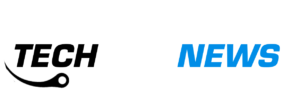SpaceX has achieved yet another milestone in the realm of orbital launches, with its Falcon 9 rocket lifting off from Launch Complex 39A at 10:47 p.m. EDT (0247 UTC). This successful launch marked SpaceX’s historic 62nd orbital mission of the calendar year, breaking its own record from 2022 when it accomplished 61 orbital missions in total.
Elon Musk, the visionary founder of SpaceX, took to his social media platform, X, to announce the company’s ambitious plans. Musk stated that SpaceX is setting its sights on a remarkable goal: “aiming for 10 Falcon flights in a month by the end of this year, then 12 per month next year.” This audacious plan demonstrates SpaceX’s relentless pursuit of pushing the boundaries of space exploration and satellite deployment.
Notably, the first stage booster responsible for supporting this groundbreaking mission, known as B1073, has now completed its 10th launch and landing, showcasing the reliability and reusability of SpaceX’s technology. This mission, which carried 21 Starlink satellites into orbit, marked the 24th Starlink mission to launch from LC-39A and the 69th launch from that pad in SpaceX’s storied history.
SpaceX had its sights set on a precise T-0 liftoff time of 10:47 p.m. EDT (0247 UTC), a remarkable coordination considering the planned splashdown of the Crew-6 astronauts and cosmonaut aboard the Crew Dragon Endeavor was set to occur just 90 minutes later. This emphasizes the intricate scheduling and precision required for SpaceX’s multiple missions.
For those following the launch closely, SpaceX had a backup liftoff time on September 3 at 11:05 p.m. EDT (0305 UTC). Additionally, there were five backup opportunities on Monday, September 4, ranging from 6:59 p.m. EDT (22:59 UTC) to 10:39 p.m. EDT (0239 UTC on September 5), further underlining the company’s dedication to ensuring mission success.
In 2023, SpaceX is primed to break its own record by achieving an impressive 62 orbital launches, surpassing the previous record of 61 set in 2022. Notably, this record places SpaceX at the forefront of commercial launch companies, as no other entity has reached such a significant number of orbital launches in a single calendar year.
Elon Musk’s vision for SpaceX remains bold and aspirational. He reiterated the company’s plans on X, stating, “Aiming for 10 Falcon flights in a month by the end of this year, then 12 per month next year.” This vision underscores SpaceX’s commitment to advancing space technology and access.
The 62nd launch of the year for SpaceX carried 21 V2 mini satellites for the company’s Starlink internet service, marking another step toward global satellite internet coverage. These V2 satellites, which offer four times the bandwidth of their predecessors, were originally intended to be launched by SpaceX’s fully-reusable Starship vehicle. However, due to the delay in Starship’s debut, SpaceX adapted the satellites for Falcon 9 launches.
This mission’s trajectory involved the Falcon 9 pitching and rolling onto a south-east trajectory, targeting an orbit inclined at 43 degrees to the equator. Following the separation from the second stage about two and a half minutes into the flight, the first stage booster, tail number B1077, embarked on its impressive 10th mission, aiming for a precise landing on the drone ship ‘Just Read the Instructions,’ stationed in the Atlantic east of the Bahamas, approximately 390 miles (627 km) from the Cape.
To achieve the desired circular orbit for the 21 Starlink satellites, the second stage required two burns. The separation of these satellites occurred approximately one hour and five minutes after liftoff.
These satellites represent the 16th launch of the next-generation Starlink satellite model, characterized by its increased size and enhanced bandwidth capabilities. The deployment of these satellites, originally intended for Starship launches, showcases SpaceX’s adaptability and commitment to expanding its Starlink constellation.
In a remarkable statistic compiled by Jonathan McDowell, an astronomer at the Harvard-Smithsonian Center for Astrophysics, SpaceX has successfully launched a total of 5,027 Starlink satellites into orbit to date, further cementing its position as a leader in the global satellite internet market.
SpaceX’s Starlink internet service has been gaining significant traction, with more than 1.5 million subscribers announced in early May. The service is now available in over 60 countries, providing high-speed internet access to remote and underserved regions around the world. This rapid expansion underscores SpaceX’s commitment to bridging the digital divide and revolutionizing global connectivity.












